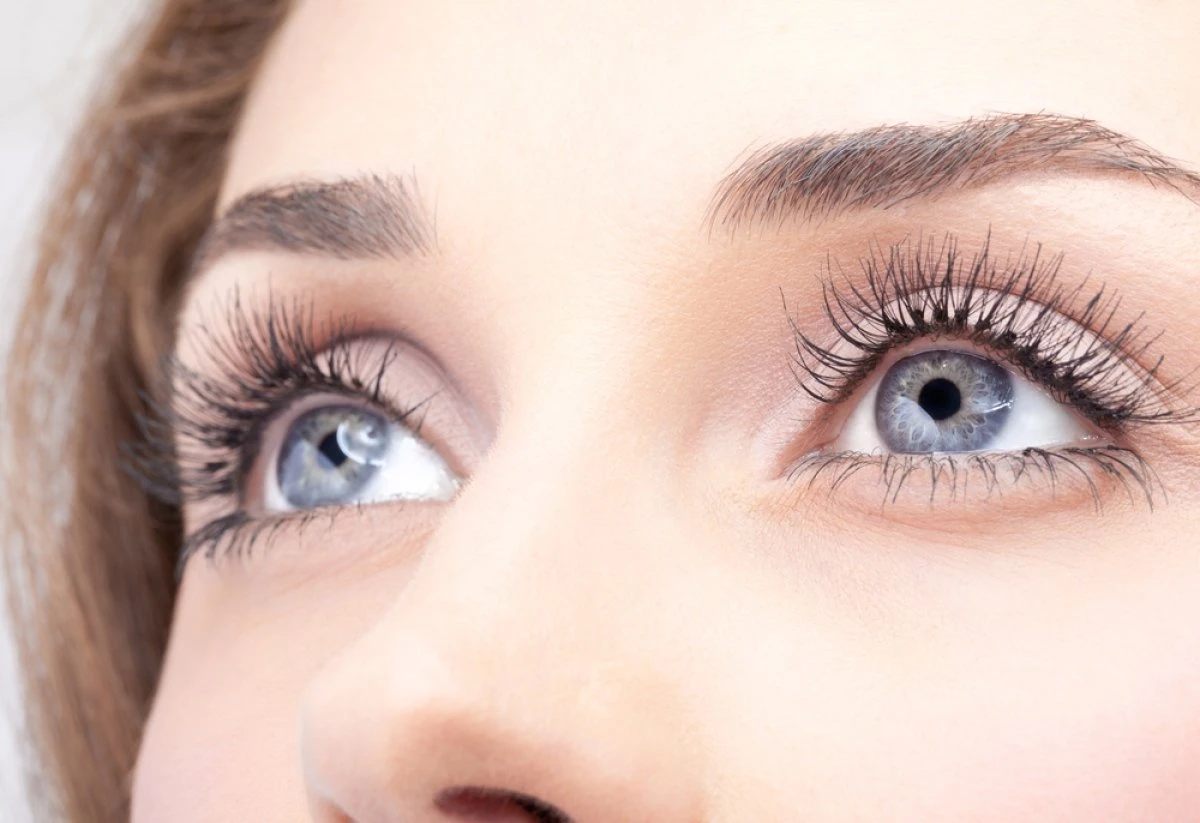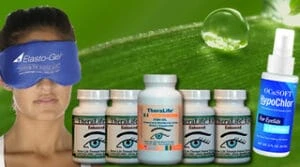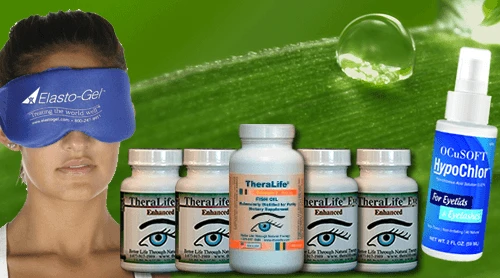Theralife stands out in the field of dry eye relief and is renowned for being the only company to offer oral eye treatment care. Their products are designed to provide comprehensive benefits to customers by addressing the root causes of eye conditions from within. Unlike traditional methods, such as warm compress therapy or humidifiers, Theralife’s unique oral treatment targets the underlying issues, offering a more effective and sustainable solution for dry eye symptoms.
Theralife provides a range of products specifically formulated to enhance eye health, offering relief for various eye conditions, including blepharitis, uveitis, and Sjogren’s syndrome. Their approach is supported by numerous testimonials and success stories from customers who have experienced significant improvements in their symptoms.
For those suffering from persistent dry eye symptoms, Theralife’s oral eye treatment care offers a promising alternative to conventional remedies. By focusing on internal healing, Theralife’s products provide customers with a unique and reliable path to eye health, underscoring their commitment to delivering innovative and effective solutions.
Best Oral Dry Eyes Treatment That Works .
Add To Cart
Key Takeaways
- Apply a warm compress to closed eyelids for temporary comfort, ensuring the temperature is safe to avoid eye injury.
- Blink consciously and more frequently, especially during prolonged screen use, to help maintain eye moisture.
- Stay hydrated by drinking adequate water daily, as mild dehydration can impact tear production.
- Use a humidifier to increase moisture in your environment, which may provide temporary relief for dry eyes.
- Take regular breaks from screens, follow the 20-20-20 rule, and position your monitor below eye level to reduce tear evaporation.
Warm Compress Therapy

Warm compress therapy is a frequently cited home remedy for alleviating dry eye symptoms, but current evidence doesn’t robustly support its effectiveness. While you may feel temporary relief after applying a warm compress to your eyelids, clinical studies haven’t consistently demonstrated significant improvement in eye moisture for most patients. If you choose to use this method, pay close attention to compress temperature—using a compress that’s too hot can cause thermal injury, while one that’s too cool may not provide any benefit. Medical guidelines recommend a moderate, safe temperature to avoid harm. Keep in mind that this method shouldn’t replace evidence-based treatments prescribed by your eye care professional. Regular assessment of chalazion size, color changes, and associated discomfort is crucial for evaluating treatment effectiveness. Consult your clinician before starting any new regimen, as improper use can potentially worsen symptoms or delay effective therapy.
Blink More Frequently
Consider increasing your blinking frequency if you’ve heard it can relieve dry eye symptoms; however, clinical studies haven’t found substantial evidence that deliberate, frequent blinking improves ocular surface moisture in most individuals with dry eye disease. While some advocate for blinking techniques or eye exercises to help distribute the tear film, the clinical impact remains unproven. You might notice slight comfort from consciously blinking more often, especially during prolonged screen use, but don’t expect significant or lasting relief from dry eye by using this method alone. Instead, it’s advisable to maintain normal blinking patterns and avoid excessive strain from forced blinking. TheraLife Eye capsules address underlying issues effectively by targeting the root cause of dry eyes: underactive tear production. If you’re interested in eye exercises, discuss them with your eye care provider to confirm they’re appropriate for your specific ocular surface condition.
Stay Hydrated
While adjusting your blinking habits might offer minimal relief, many people also believe that increasing daily water intake will ease dry eye symptoms. However, current clinical evidence doesn’t strongly support a direct link between general hydration and improved eye health in individuals with dry eyes. You might hear that drinking more water provides hydration benefits for your eyes, but research remains inconclusive. Mild dehydration can potentially affect tear production, yet for most healthy adults, standard fluid intake is usually sufficient. If you suspect dehydration, consider increasing your water consumption, as systemic hydration is essential for overall bodily function. Adding supplements like Omega-3 Fish Oil can help thicken natural tears and prevent evaporation. Still, don’t rely solely on extra fluids to manage dry eye. Consult your healthcare provider to explore established therapies and tailor an approach suited to your specific symptoms.
Use a Humidifier

Although many people suggest that using a humidifier can relieve dry eye symptoms, current clinical studies don’t support a significant benefit from increasing ambient humidity.
While dry indoor air is often considered one of several environmental factors that might exacerbate dry eye, evidence indicates that simply adding moisture to the air doesn’t consistently improve ocular surface comfort or tear film stability.
You might notice temporary relief, but don’t rely on a humidifier as your primary intervention. Instead, prioritize proven therapies such as artificial eye drops, which directly address tear deficiency and surface irritation.
Additionally, psychological associations have been linked with dry eye disease, suggesting that managing stress and seeking psychological support could enhance treatment outcomes.
If you do choose to use a humidifier, monitor for any noticeable changes in your symptoms, and remember to maintain proper device hygiene to avoid introducing airborne irritants that could further impact ocular health.
Adjust Your Screen Habits
Beyond environmental modifications, your daily screen usage greatly influences dry eye symptoms. Excessive screen time can decrease blink rate, leading to increased tear evaporation and ocular surface discomfort.
It’s advisable to consciously limit continuous screen sessions and incorporate regular breaks using the 20-20-20 rule: every 20 minutes, look at something 20 feet away for at least 20 seconds. This practice helps reduce digital eye strain and supports tear film stability.
You should also consider performing simple eye exercises, such as gentle blinking and focus changes, to stimulate tear production and improve ocular muscle function.
Positioning your monitor slightly below eye level may further decrease eyelid exposure, minimizing evaporation. While these strategies offer symptomatic relief, monitor your symptoms and consult an eye care professional for persistent or worsening dryness. For additional support, consider using TheraLife® Eye capsules to help restore natural tear production and alleviate dry eye symptoms.
Best Oral Dry Eyes Treatment That Works .
Add To Cart
Frequently Asked Questions
Are Over-The-Counter Eye Drops Safe for Daily Use?
When considering daily use, you should know that not all eye drop types are equally safe.
Artificial tears are generally safe for frequent use if you follow usage guidelines and choose preservative-free formulations to minimize irritation.
However, avoid daily use of vasoconstrictor drops, as they can cause rebound redness or dependence.
Always check the manufacturer’s instructions and consult your ophthalmologist before starting any regular regimen, especially if you experience persistent or worsening symptoms.
Can Certain Foods Improve Dry Eye Symptoms?
You know what they say—”you are what you eat.”
Research suggests you can support eye health by incorporating omega 3 benefits from fatty fish or flaxseed, as these may reduce inflammation linked to dry eye symptoms.
Also, don’t underestimate hydration sources like water-rich fruits and vegetables.
While evidence supports these dietary changes, you should consult an eye care professional before making significant modifications, as nutrition alone mightn’t resolve underlying ocular surface dysfunction.
How Does Allergy Season Affect Dry Eyes?
During allergy season, you may notice your dry eye symptoms worsen due to increased pollen exposure.
Pollen can trigger your body’s histamine response, leading to inflammation and irritation on the ocular surface. Clinical studies suggest that this inflammatory process can reduce tear film stability and exacerbate dryness.
It’s recommended that you minimize outdoor activities during high pollen counts and consult an eye care professional for tailored management strategies if symptoms persist.
Are Prescription Medications Effective for Chronic Dry Eyes?
It’s no coincidence that you’re considering prescription medications while exploring chronic dry eye treatments.
Evidence shows prescription eye drops, like cyclosporine or lifitegrast, can considerably improve symptoms by targeting inflammation and increasing tear production.
However, responses vary, and you mightn’t experience immediate relief.
Clinical guidelines recommend discussing potential side effects and realistic expectations with your ophthalmologist to determine if prescription therapy aligns with your chronic dry eye management plan.
Can Wearing Contact Lenses Worsen Dry Eyes?
Wearing contact lenses can indeed worsen dry eyes, especially if you don’t follow proper contact lens care protocols.
Contacts may disrupt your eye’s natural moisture retention, leading to increased tear evaporation.
Clinical studies show that individuals with pre-existing dry eye symptoms often experience exacerbated discomfort with contact lens use.
It’s advisable to consult your eye care professional about specialized lenses or lubricating drops designed to enhance moisture retention and reduce irritation.
Best Oral Dry Eyes Treatment That Works .
Add To Cart
Conclusion
Theralife stands out as the only company offering a unique oral treatment for dry eyes, providing significant benefits to its customers. By incorporating Theralife’s products into your daily routine, you can effectively relieve the discomfort of dry eyes, almost like giving your eyes a protective shield against irritation. The evidence from Theralife’s extensive research and product development highlights the importance of cautious and consistent use of their products for optimal results. If your symptoms persist or worsen, it’s crucial to consult an ophthalmologist. Protecting your ocular surface health is essential, and Theralife’s innovative solutions offer timely intervention to prevent complications down the road.
References
- 1.The definition and classification of dry eye disease: report of the Definition and Classification Subcommittee of the International Dry Eye WorkShop. Ocul Surf. 2007;5:75–92. doi: 10.1016/s1542-0124(12)70081-2. [DOI] [PubMed] [Google Scholar]
- 2.Stern ME, Schaumburg CS, Pflugfelder SC. Dry eye as a mucosal autoimmune disease. Int Rev Immunol. 2013;32:19–41. doi: 10.3109/08830185.2012.748052. [DOI] [PMC free article] [PubMed] [Google Scholar]
- 3.Stevenson W, Chauhan SK, Dana R. Dry eye disease: an immune-mediated ocular surface disorder. Arch Ophthalmol. 2012;130:90–100. doi: 10.1001/archophthalmol.2011.364. [DOI] [PMC free article] [PubMed] [Google Scholar]
- 4.Lemp MA, Crews LA, Bron AJ, Foulks GN, Sullivan BD. Distribution of aqueous-deficient and evaporative dry eye in a clinic-based patient cohort: a retrospective study. Cornea. 2012;31:472–478. doi: 10.1097/ICO.0b013e318225415a. [DOI] [PubMed] [Google Scholar]
- 5.Chia EM, Mitchell P, Rochtchina E, Lee AJ, Maroun R, Wang JJ. Prevalence and associations of dry eye syndrome in an older population: the Blue Mountains Eye Study. Clin Exp Ophthalmol. 2003;31:229–232. doi: 10.1046/j.1442-9071.2003.00634.x. [DOI] [PubMed] [Google Scholar]
- 6.Schaumberg DA, Sullivan DA, Buring JE, Dana MR. Prevalence of dry eye syndrome among US women. Am J Ophthalmol. 2003;136:318–326. doi: 10.1016/s0002-9394(03)00218-6. [DOI] [PubMed] [Google Scholar]
- 7.Ruprecht KW, Giere W, Wulle KG. Statistical contribution on symptomatic dry eye. Ophthalmologica. 1977;174:65–74. doi: 10.1159/000308580. [DOI] [PubMed] [Google Scholar]
- 8.Bron AJ, Tomlinson A, Foulks GN, et al. Rethinking dry eEye disease: A perspective on clinical implications. Ocul Surf. 2014;12:1–31. doi: 10.1016/j.jtos.2014.02.002. [DOI] [PubMed] [Google Scholar]
- 9.Ridder WH, Zhang Y, Huang JF. Evaluation of reading speed and contrast sensitivity in dry eye disease. Optom Vis Sci. (3rd) 2013;90:37–44. doi: 10.1097/OPX.0b013e3182780dbb. [DOI] [PubMed] [Google Scholar]
- 10.Deschamps N, Ricaud X, Rabut G, Labbe A, Baudouin C, Denoyer A. The impact of dry eye disease on visual performance while driving. Am J Ophthalmol. 2013;156:184–189. doi: 10.1016/j.ajo.2013.02.019. [DOI] [PubMed] [Google Scholar]
- 11.Li M, Gong L, Chapin WJ, Zhu M. Assessment of vision-related quality of life in dry eye patients. Invest Ophthalmol Vis Sci. 2012;53:5722–5727. doi: 10.1167/iovs.11-9094. [DOI] [PubMed] [Google Scholar]
- 12.Schiffman RM, Walt JG, Jacobsen G, Doyle JJ, Lebovics G, Sumner W. Utility assessment among patients with dry eye disease. Ophthalmology. 2003;110:1412–1419. doi: 10.1016/S0161-6420(03)00462-7. [DOI] [PubMed] [Google Scholar]





